Learn what common cut flowers and indoor plants are toxic to cats and what you should do if your cat ingests a poisonous plant.

11 Poisonous Plants Every Cat Owner Should Avoid

On This Page
Some Plants Are Unsafe for Cats
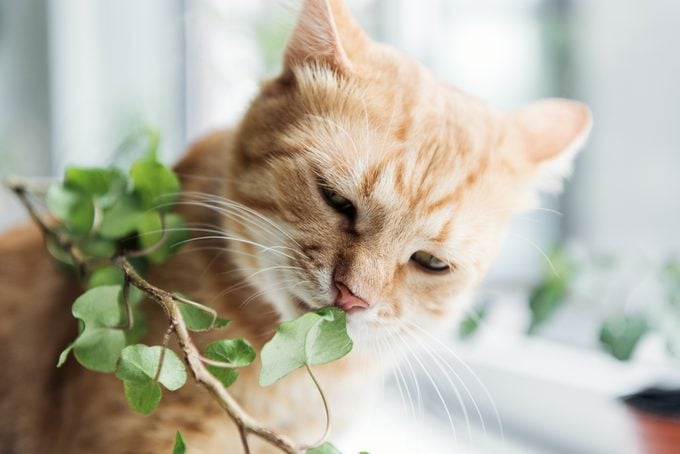
Part of what makes cat ownership fun (and occasionally challenging) is seeing where their curiosity leads them. However, it’s important to keep your home safe for your adventurous feline. Veterinarian Dr. Kimberlyn Warkoczewski says, “Unlike dogs, there are a ton of plants that can harm cats. That doesn’t mean you can’t have houseplants, but it’s very dependent on the cat. Some cats aren’t interested in plants at all. But it’s always good to do your research first before you bring a new plant into your home.”
Here are 11 common plants toxic to cats.
Editor’s Note: This is only a small part of a much bigger list. The ASPCA offers an extensive searchable database of toxic plants. Another useful site is the University of North Carolina Extension Gardener Plant Toolbox. Cat owners may wish to check all of their houseplants, just to be safe.
Psst—try these pet friendly indoor plants for dog and cat owners instead.
Lilies
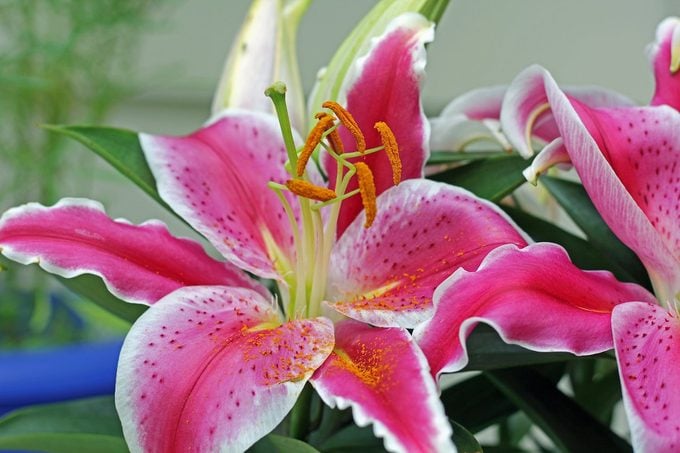
When asked what is the top plant for cat owners to avoid, Dr. Warkoczewski immediately names lilies (Lilium).”Whether it’s a leaf, the flower, the roots, the stem — all parts of a lily are very toxic,” she says. There’s a wide range of lily species, but those most poisonous for cats include Easter lilies, tiger lilies and daylilies, and can lead to kidney failure if ingested, even in small amounts.
“Lilies are the plants that have some of the really scary consequences for cats,” Dr. Warkoczewski says, noting that a cat that consumes any part of a lily plant should be brought to a veterinary clinic immediately and will likely need to be hospitalized.
Are rose plants toxic to cats and dogs?
Monstera

Otherwise known as the Swiss cheese plant, this plant may have eye-catching foliage, but it also has calcium oxalate crystals within its sap, making all parts of this plant toxic.
If nibbled on, it can cause mouth irritation and difficulty swallowing. In most cases, monstera (Monstera deliciosa) isn’t fatal for cats but eating large quantities can damage their kidneys.
A similar looking plant often confused with monstera is the cut-leaf philodendron, Philodendron bipinnatifidum. Philodendrons are also toxic to cats.
Find out if it is safe to have poinsettias around cats and dogs.
Aloe Vera
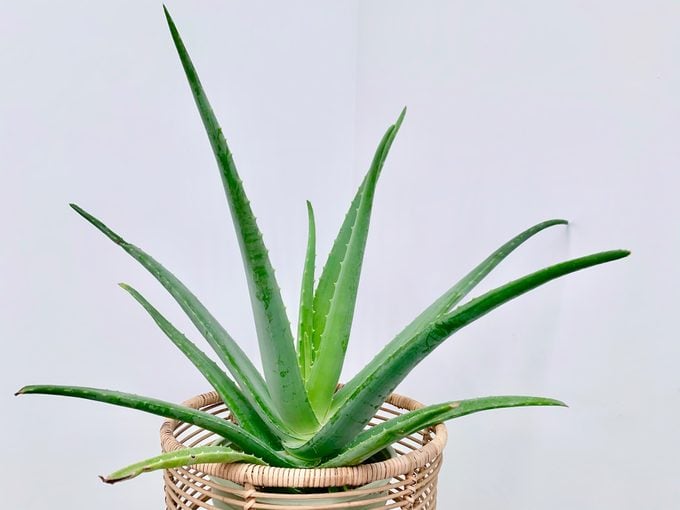
One of the benefits of an aloe vera plant for humans is its medicinal properties, but for cats, it can cause health problems, such as vomiting and lethargy. The gel inside is edible but its outer edges contain toxic latex.
Is mistletoe poisonous for people and pets?
Azalea/Rhododendron

Azalea and rhododendron are great as potted indoor plants and cut flowers for bouquets but they’re not feline-friendly. “This is another one that can cause serious problems,” says Dr. Warkoczewski. All parts of rhododendron are toxic due to its resins and if ingested, create havoc, from paralysis and loss of appetite to coma.
Dr. Warkoczewski advises, “If you think your cat has eaten a toxic plant, whether that’s rhododendron or something else, the first thing to do is put it in a different room or a carrier. Then observe your cat to make sure it’s not having an immediate physical reaction.”
Find out if you should keep kids and pets away from milkweed.
Tulips
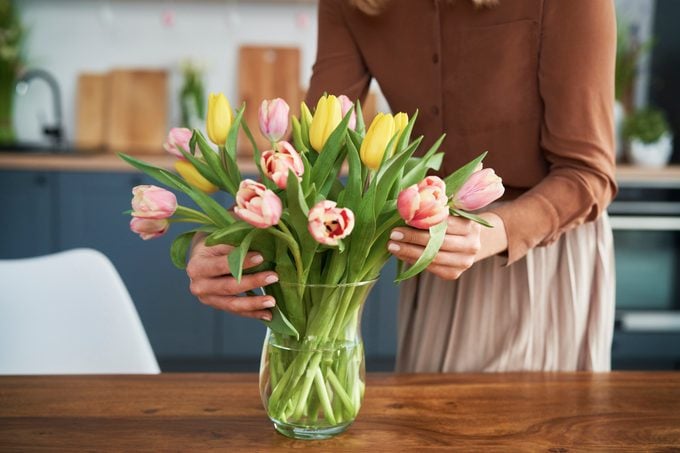
Just like lilies, tulips are part of the Liliceae family and all parts of the tulip are toxic, especially the tulip bulb. Small amounts cause symptoms like drooling and vomiting, while larger amounts increase respiratory and heart rates.
Jade Plants

Although toxic to both cats and dogs, jade plants (Crassula ovata) don’t typically cause a severe physical reaction in either but they still create unpleasant symptoms like vomiting and diarrhea. It’s unknown what the toxic element in jade plants is for cats, but all parts are considered toxic.
Amaryllis
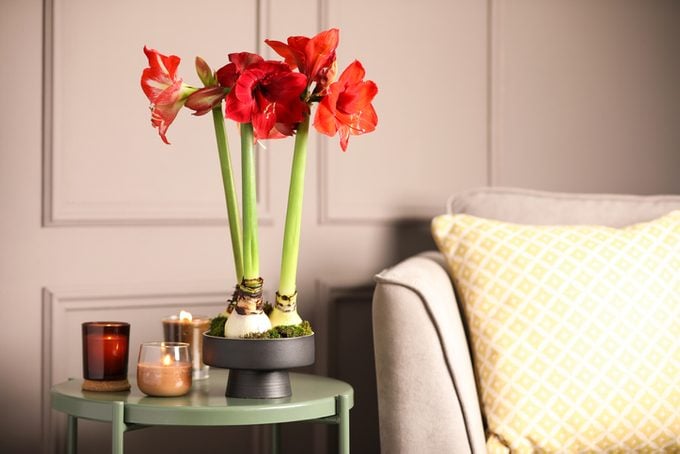
A pop of color in colder months, cats who consume amaryllis risk vomiting and gastrointestinal pain. “A lot of the time, the drooling from plant toxins is caused by little ulcers forming in their mouth,” says Dr. Warkoczewski. “If you notice weird lip-licking or like your cat is grooming the air, that can be a sign that their mouth is irritated and they’re having a reaction to eating a plant.”
Sago Palm

All parts of the sago palm (Cycas revoluta), from the seeds to the fronds, contain cyan toxin, which quickly leads to serious symptoms, including liver failure.
“Look up the species of plant you think your cat has ingested — there are a lot of plant apps that can help you do this — then call the Pet Poison Helpline for immediate advice,” Dr. Warkoczewski says. “There’s a fee to open up a case, but your veterinarian can use the same case number.” The Pet Poison Helpline is poison control for pets and is available 24/7.
Dieffenbachia

This tropical plant grown for its foliage is common in houseplant collections. Cats who chew on the leaves will experience oral pain and intense burning, excessive drooling, and swelling that may cause difficulty in swallowing or breathing.
Pothos

Pothos are popular for their low-maintenance and handsome foliage. However, the calcium oxalates in the plant cause intense burning and irritation in the mouths of cats which can lead to vomiting and throat swelling.
“If you do have a plant around the house that’s toxic to pets, keep it in a hanging basket out of reach,” advises Dr. Warkoczewski. Pothos, with their trailing growth habit, are a great option for this.
Note: heartleaf philodendron (Philodendron hederaceum), which looks similar to pothos, is also toxic to cats.
We asked the experts—will a catmint plant attract cats to the garden?
Hyacinth

Hyacinth are another member of the Liliaceae family and cause intense vomiting and diarrhea if your cat consumes it, especially the bulb.
“I sometimes get asked: ‘Won’t my cat instinctually know ahead of time that something is poisonous?’ But they’re explorative by nature,” says Dr. Warkoczewski. “If you think your cat has eaten a plant it shouldn’t have, one of the best things you can do is know the name of the plant species it’s eaten so your vet has all the details they need.”
Next, check out our ultimate guide to a dog friendly backyard.
About the Expert
Dr. Kimberlyn Warkoczewski DVM has been a practicing veterinarian at the Greenfield Veterinary Clinic in Greenfield, Wisconsin, for three years. She graduated from the University of Wisconsin-Madison School of Veterinary Medicine.
Sources
- Monstera Plant Resource Center – Are Monsteras Toxic to Cats?
- ASPCA – Cutleaf Philodendron
- U.S. Food & Drug Administration – Lovely Lilies and Curious Cats: A Dangerous Combination
- Purina – Are tulips poisonous for cats?
- Wag! Jade Plant Poisoning in Cats
- ASPCA – Amaryllis
- ASPCA – Sago Palm
- PetMD.com – Sago Palm Poisoning in Cats
- ASPCA – Golden Pothos
- Wag! Hyacinth Poisoning in Cats





















